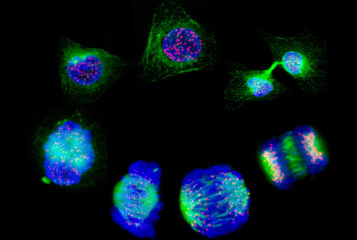Anxiety may be controlled by a genetic 'switch'
An area in the human and mouse genome has been found to contain DNA that controls genes involved in anxiety...

by Jake Knox
An area in the human and mouse genome has been found to contain DNA that controls genes involved in anxiety...

by Olivia Goff
Whole genome sequencing data from 500,000 British volunteers has been released globally by UK Biobank, for scientific research...

Researchers have identified four new breast-cancer-associated genes that have the potential to help improve clinical screening for women at risk...

by Hannah Flynn
Cells in early human embryos are unable to effectively repair the double-stranded DNA breaks made during CRISPR/Cas9-based genome editing...


A new pathway involved in the breaking and repairing of noncoding DNA has been discovered, which may lead to new treatments for neurological diseases...

To celebrate Gregor Mendel's 200th birthday, PET and Genomics England held an event reflecting on what science and medicine have inherited from Mendel and what the future holds regarding our understanding and treatment of genetic disorders in the era of whole genome sequencing...

Repetitive sequences in noncoding DNA may lead to the generation of cancer-causing mutations...

Researchers have identified the first example of a non-coding DNA region that is crucial to the survival and implantation of mouse embryos...

A sequence of repetitive noncoding DNA that varies considerably in length between humans, has been shown to play a role in ageing and cancer...
BioNews, published by the Progress Educational Trust (PET), provides news and comment on genetics, assisted conception, embryo/stem cell research and related areas.

